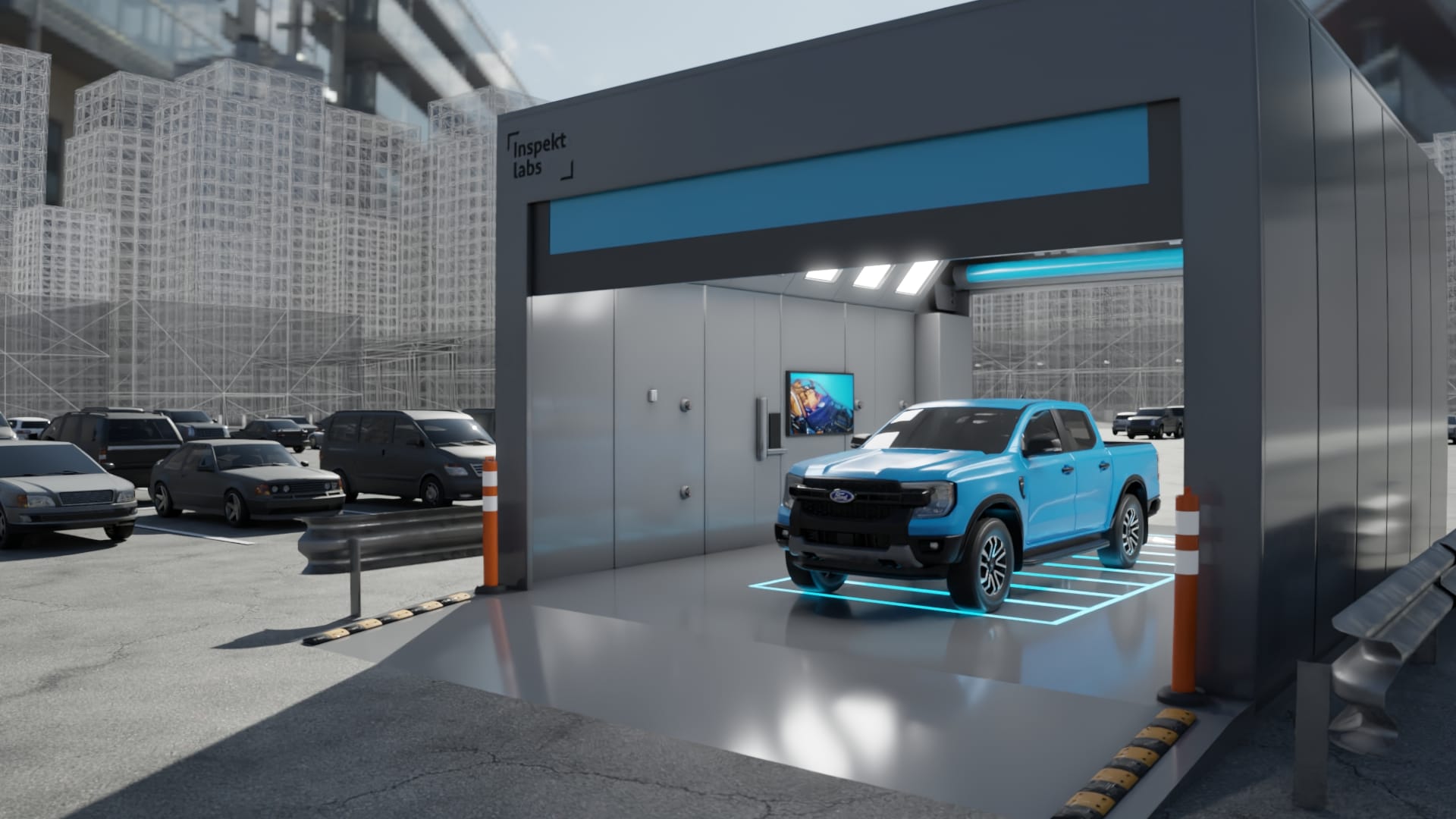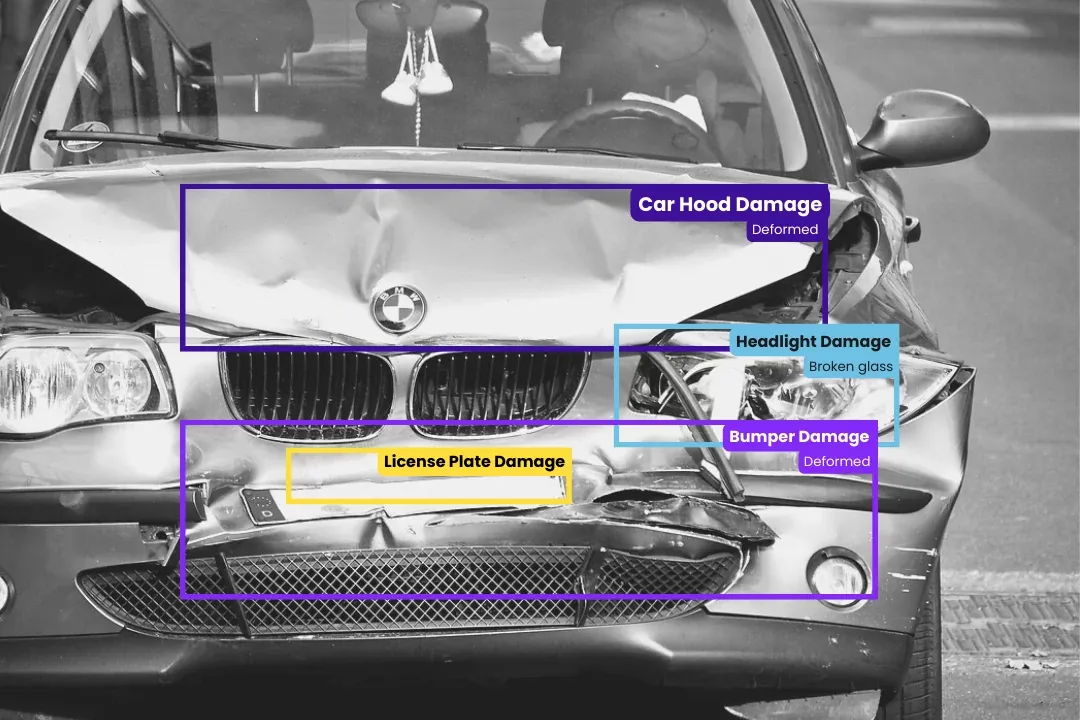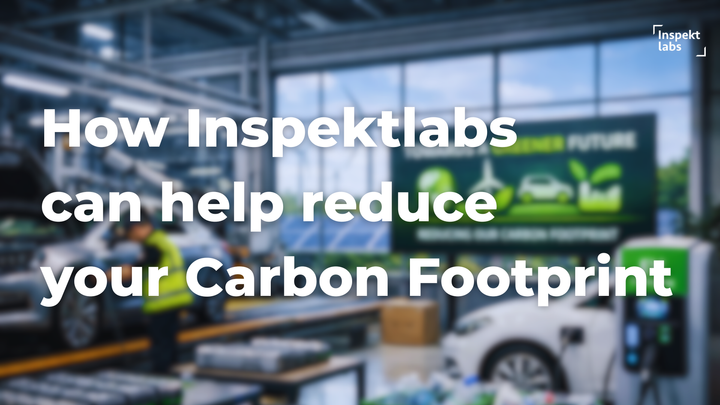How Centralized (or Fixed Camera) and Decentralized (or Smartphone-Based) Frameworks Enhance Vehicle Inspections | Inspektlabs
Our discussion illustrates how a clever combination of decentralized (or smartphone-based) and centralized (or fixed camera) inspections enables damage detection for numerous industries.

This post will discuss the two primary frameworks for digital vehicle inspections, viz., decentralized (or smartphone-based) and centralized (or fixed camera) installations. First, we will briefly discuss the relevance of car inspections and the fundamentals of such inspections. Then, we will discuss centralized (or fixed camera) installations and decentralized (or smartphone-based) inspections in detail. After that, we will cover how combining these inspections facilitates a holistic inspection solution. Then, we will cover the specifics of vehicle damage detection achievable through these inspections and delve deep into the related use cases. Before concluding, we will briefly cover how Inspektlabs' vehicle inspection software caters to many use cases.
Introduction
Car inspections are an integral component of the automotive industry. Many businesses rely on these inspections for a working business model. For example, car rental, car leasing, and even automotive insurance players place a significant value on these inspections. Since vehicle inspections are helpful in many domains, different techniques can help accommodate the needs of every business. The two primary approaches to car inspections are centralized (or fixed camera) inspections and decentralized (or smartphone-based) inspections. These inspections enable businesses to generate accurate and reliable vehicle condition reports. So, let us explore how these inspections function and their value to the automotive industry.
Decentralized (or Smartphone-Based) Inspections

Centralized (or Fixed Camera) Inspections

The Relevance of Car Inspections
Car inspections are highly beneficial for many businesses. These inspections enable companies to keep track of their fleets and monitor the health of their vehicles. Furthermore, these inspections also allow individuals participating in the sharing economy to have a reliable mechanism for inspecting cars. Vehicle inspections can detect damage, highlight safety concerns, reduce fraud cases and streamline the insurance claims process. While these are some examples of the benefits of vehicle inspections, they offer many more applications. We can now proceed with two types of vehicle inspections, having established a fundamental understanding.
Centralized (or Fixed Camera) Inspections
An AI processes the photos and videos captured to analyze damages and generate an inspection report in automated vehicle inspections. The difference arises at the point of capture. There are two ways to go about capturing a vehicle. The first is through a centralized (or fixed camera) installation setup. These centralized (or fixed camera) inspections enable a higher quality of capture because of the structured and methodological capture framework. Under this framework, a number of fixed cameras are set up as part of an integrated capture setup that seeks to cover all possible angles of recording a vehicle. These centralized (or fixed camera) installations are generally elaborate and only feasible in structures such as a body shop. As the name suggests, these cameras are fixed and are only accessible if the customer brings their vehicle to the site where they are installed. However, since this framework is elaborate, it requires extensive investment and upkeep. Therefore, it is not always feasible to have such an elaborate setup. So, in those cases, we use decentralized (or smartphone-based) inspections.
Decentralized (or Smartphone-Based) Inspections
Decentralized (or smartphone-based) inspections are the second type of vehicle inspection that businesses can utilize. As the name suggests, these inspections are not bound by any fixed location. Under this framework, the customer captures the vehicle using a smartphone. Any end user can independently capture and upload photos and videos of their cars, which the AI then processes to generate the report. However, since the end users who capture these photos and videos are not vehicle inspection experts, they require some guidance. A guided capture ensures consistency and reliability of the captured content and ensures that all the required visuals are captured adequately. Smartphone-based applications or web apps can provide real-time guidance to the user capturing the vehicle to facilitate this guidance.

A Comparison of Centralized vs. Decentralized inspections Across Various Parameters
Together, both these inspection frameworks offer a holistic solution for vehicle inspections. Let us analyze some critical benefits that this comprehensive framework provides.
- Accessibility - While centralized (or fixed camera) inspections are highly accurate, they are not the most accessible. Not every car owner is in a position to bring their vehicle into a body shop or garage for a vehicle inspection. Furthermore, in remote areas, where hosting such an elaborate setup is not feasible, users do not have much choice. Therefore, decentralized (or smartphone-based) inspections exponentially enhance the scope of vehicle inspections by eliminating geographical limitations. So, in cases where a car cannot physically come to a specific site, a decentralized (or smartphone-based) inspection can handle the task.
- Efficiency - Centralized (or fixed camera) inspections can cater to a limited number of vehicles in a fixed period. For example, only one car can be inspected if a garage has one centralized (or fixed camera) inspection site. In this framework, simultaneous inspections are not possible, which reduces efficiency. Whereas, when dealing with decentralized (or smartphone-based) inspections, users are not constrained by business hours or availability. They can independently conduct the vehicle inspection through the guided apps at their convenience.
- Accuracy - While decentralized (or smartphone-based) inspections are an excellent option in many instances, they have shortcomings. For example, capturing micro damages with decentralized (or smartphone-based) inspections can be pretty tricky. This bottleneck arises because many micro damages do not appear on video capture. The quality of the smartphone camera also plays a role, and the surrounding environment may not always be ideal for capturing a vehicle. On the other hand, centralized (or fixed camera) inspections offer a controlled environment, high-quality equipment, and a streamlined process that ensures that even micro damages are captured adequately. Let us consider an illustration to help us further understand such an incident. The image below shows minor damage on the vehicle's roof, which is being highlighted due to the black and white stripes in the centralized (or fixed camera) installation setup.

Capturing such damage will be incredibly challenging in a decentralized (or smartphone-based) inspection because not every user can get that angle. Even if they do, such damage may not always be reflected.
- Cost - While fixed equipment inspections offer higher accuracy, they are not always cost-effective. This factor is especially true for use cases with a higher frequency of vehicle inspections. For example, if a car rental business needs to take their vehicles to a garage for inspections after every rental, it will be very costly and inefficient. Similarly, if an individual wants to integrate their vehicle into the sharing economy, they cannot afford to take the car to the garage frequently. With decentralized (or smartphone-based) inspections, the cost is no longer prohibitive. Users can conveniently and affordably inspect their vehicles because the price per inspection is significantly lower than a centralized (or fixed camera) inspection.
A Comparison of the Types of Damage Detection Across Centralized vs. Decentralized Inspections
Now that we know how these inspections function, let us look at the specific type of damage they capture.
- Visible External Damages - In both frameworks, external damages are captured adequately.
- Micro Damages - In decentralized (or smartphone-based) inspections, micro damages are often not visible and do not show up on the photos and videos of the vehicle. However, as discussed previously, centralized (or fixed camera) inspections eliminate this issue by using different techniques to ensure precision. The images below illustrate how centralized (or fixed camera) installations can detect certain micro damages that a decentralized (or smartphone-based) inspection cannot capture. As you may observe from the first two images, the damage is minor enough not to be reflected in a smartphone capture. However, we can detect this damage using a centralized (or fixed camera) installation setup.


- Tire Damage - Tire damages can be detected and identified adequately in both frameworks.
- Damage to undercarriage - Detecting damages to the undercarriage is possible under both frameworks, but centralized (or fixed camera) inspections offer an additional advantage. Under the centralized (or fixed camera) inspection framework, businesses can install additional lighting under the car to better illuminate the region. This enhanced illumination considerably improves the quality of the capture and leads to a highly accurate inspection report.
A Comparison of Centralized vs. Decentralized Inspections Across Various Use Cases
Let us now consider the use cases for both vehicle inspection frameworks.
- Insurance claims - For motor insurance claims, the ideal time to capture the vehicle is immediately after the accident. Therefore, in such cases, decentralized (or smartphone-based) inspections are the suitable option because users can capture the cars conveniently from the site of the accident.
- Manufacturing – The most suitable approach for detecting defects in a manufacturing line is through a centralized (or fixed camera) installation framework. Since it is impossible to inspect vehicles through smartphones in a manufacturing line, a centralized (or fixed camera) approach is the ideal option. Furthermore, manufacturing lines are already streamlined, and incorporating a centralized (or fixed camera) installation setup is far more feasible and achievable.

- Repair workshops - There are numerous repair shops in any given area, and incorporating a centralized (or fixed camera) installation in each one is not feasible. Doing so is also not economically viable for every repair shop; therefore, repair shops generally rely on decentralized (or smartphone-based) inspections.
- Security - In such cases, the vehicle must pass through a security checkpoint. The checkpoint remains static as multiple vehicles pass through them. Therefore, a centralized (or fixed camera) installation is more viable.
- Car rentals - When dealing with car rentals, a vehicle will change hands many times. Bringing the car into a fixed location after every rental is not feasible; therefore, these inspections are decentralized (or smartphone-based). Furthermore, in such cases, car inspections can be conducted instantly and with complete transparency in front of the customers.
- Car auctions - whether the inspection model will be decentralized (or smartphone-based) or centralized in car auctions will depend on the type of auction itself. A fixed-equipment installation will be more suitable if the car auction is centralized, such as at an auction house. However, smartphone-based decentralized (or smartphone-based) inspections are more appropriate if the car auction is decentralized (or smartphone-based) and the exchange happens at random sites.
- Logistics - In the logistics sector, a vehicle may require an inspection before and after transportation. Depending on the situational context and the business requirements, centralized and decentralized (or smartphone-based) inspections are suitable. For example, if a logistics company has many vehicles in its fleet that require regular inspections, a centralized (or fixed camera) installation setup would be ideal. However, a decentralized (or smartphone-based) smartphone-based inspection mechanism would be more appropriate if the inspection volume is lower and the inspection sites are not predetermined.
Inspektlabs' Digital Vehicle Inspections Solution
Inspektlabs' vehicle damage inspection system offers comprehensive coverage for all use cases. Inspektlabs caters to all the use cases discussed above, as it can provide both decentralized (or smartphone-based) and centralized inspections. For decentralized (or smartphone-based) inspections, users can leverage Inspektlabs' web app for vehicle inspection and the API for AI-based inspection. In centralized inspections, however, the client installs their vehicle capture framework and then leverages Inspektlabs' API for the AI inspection.
Conclusion
As you may have realized, there's a broad range of use cases and applicability of both types of inspections. As more businesses and industries adopt automated vehicle inspections, car inspection technology will invariably improve. Our discussion illustrates how a clever combination of decentralized (or smartphone-based) and centralized (or fixed camera) inspections enables damage detection for numerous industries. Further, it demonstrates how these types of inspections differ and the unique benefits they offer.



